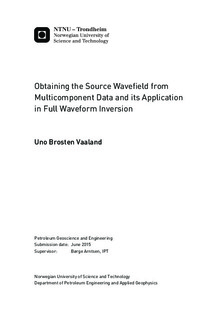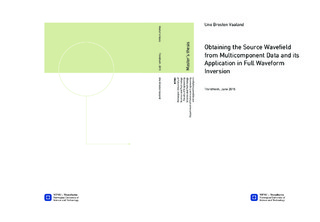| dc.description.abstract | In full waveform inversion (FWI) we need to know the seismic source signature. In practice this is generally unknown, and it must be estimated using statistical methods or inversion. However, these methods rely on assumptions that are often false, which results in a poorly estimated source. This can have a crippling effect on FWI, since it is an ill-posed and highly nonlinear problem that is very sensitive to errors in the inputs. Small errors in the source can cause the solution predicted by FWI to deviate significantly from the true solution. To better estimate the source for FWI, we suggest using a method for extracting the source wavefield when given multicomponent data. The method for obtaining the source wavefield derives from the reciprocity theorem, and involves injecting the multicomponent data into an homogeneous model with a finite difference injector. We then use the source wavefield as input for the source in FWI. Numerical examples are presented, and we find that the extracted source field can successfully be used in FWI, although numerical inaccuracies inhibits it from fulfilling its true potential. | |

